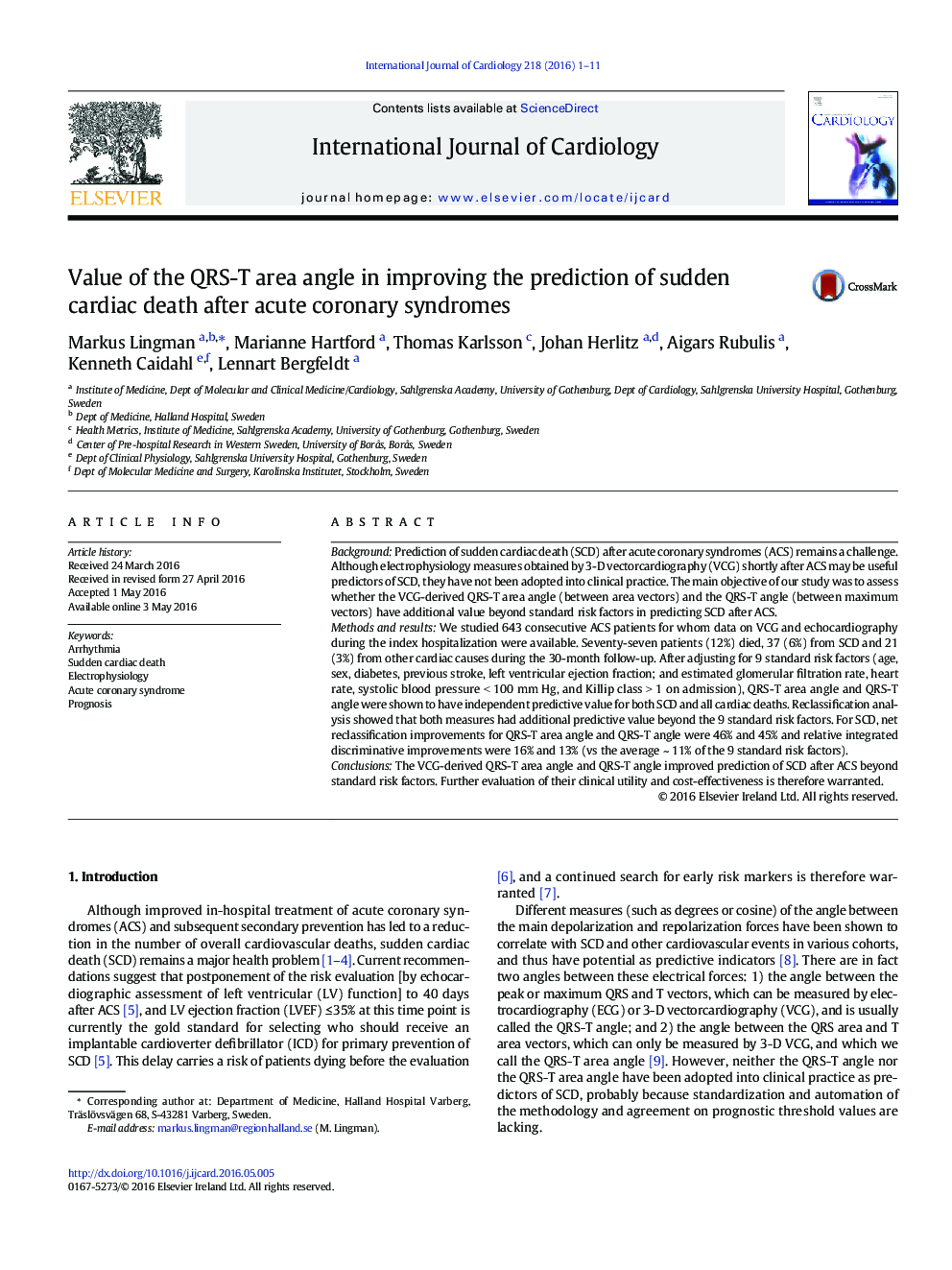| Article ID | Journal | Published Year | Pages | File Type |
|---|---|---|---|---|
| 5964087 | International Journal of Cardiology | 2016 | 11 Pages |
BackgroundPrediction of sudden cardiac death (SCD) after acute coronary syndromes (ACS) remains a challenge. Although electrophysiology measures obtained by 3-D vectorcardiography (VCG) shortly after ACS may be useful predictors of SCD, they have not been adopted into clinical practice. The main objective of our study was to assess whether the VCG-derived QRS-T area angle (between area vectors) and the QRS-T angle (between maximum vectors) have additional value beyond standard risk factors in predicting SCD after ACS.Methods and resultsWe studied 643 consecutive ACS patients for whom data on VCG and echocardiography during the index hospitalization were available. Seventy-seven patients (12%) died, 37 (6%) from SCD and 21 (3%) from other cardiac causes during the 30-month follow-up. After adjusting for 9 standard risk factors (age, sex, diabetes, previous stroke, left ventricular ejection fraction; and estimated glomerular filtration rate, heart rate, systolic blood pressure < 100 mm Hg, and Killip class > 1 on admission), QRS-T area angle and QRS-T angle were shown to have independent predictive value for both SCD and all cardiac deaths. Reclassification analysis showed that both measures had additional predictive value beyond the 9 standard risk factors. For SCD, net reclassification improvements for QRS-T area angle and QRS-T angle were 46% and 45% and relative integrated discriminative improvements were 16% and 13% (vs the average ~ 11% of the 9 standard risk factors).ConclusionsThe VCG-derived QRS-T area angle and QRS-T angle improved prediction of SCD after ACS beyond standard risk factors. Further evaluation of their clinical utility and cost-effectiveness is therefore warranted.
